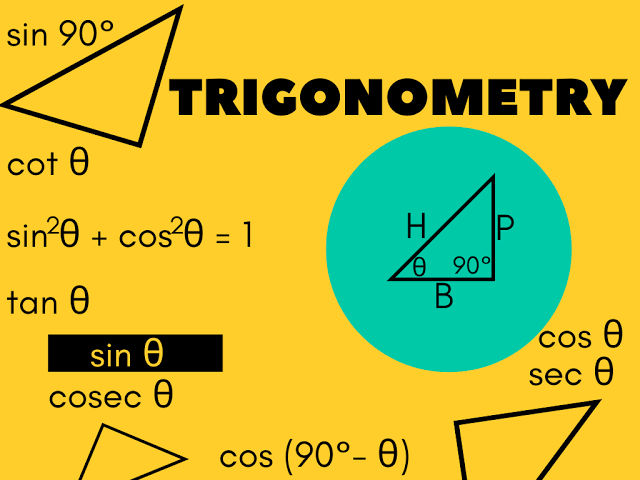
Trigonometry is a branch of mathematics that deals with the relationships between the angles and sides of triangles. It is especially useful in geometry, physics, engineering, and many other fields. The word “trigonometry” comes from the Greek words “trigonon” (triangle) and “metron” (measure), so it literally means “measurement of triangles.”
Key Concepts:
- Angles: Trigonometry primarily deals with angles, usually measured in degrees (°) or radians (rad).
- Degrees: A full circle is 360°, and a right angle is 90°.
- Radians: A full circle is 2π2\pi2π radians, and a right angle is π2\frac{\pi}{2}2π radians.
- Right-Angled Triangle: Trigonometry is often studied using right-angled triangles (triangles with one angle of 90°). In such a triangle, the sides have specific names:
- Hypotenuse: The longest side of the right triangle, opposite the right angle.
- Opposite Side: The side opposite to the angle you’re considering.
- Adjacent Side: The side next to the angle you’re considering (but not the hypotenuse).
- Trigonometric Ratios: There are six primary trigonometric functions that relate the angles to the sides of a right-angled triangle:
- Sine (sin): sin(θ)=opposite hypotenuse\sin(\theta) = \frac{\text{opposite}}{\text{hypotenuse}}sin(θ)=hypotenuseopposite
- Cosine (cos): cos(θ)=adjacenthypotenuse\cos(\theta) = \frac{\text{adjacent}}{\text{hypotenuse}}cos(θ)=hypotenuseadjacent
- Tangent (tan): tan(θ)=oppositeadjacent\tan(\theta) = \frac{\text{opposite}}{\text{adjacent}}tan(θ)=adjacentopposite
- Cosecant (csc): csc(θ)=1sin(θ)\csc(\theta) = \frac{1}{\sin(\theta)}csc(θ)=sin(θ)1
- Secant (sec): sec(θ)=1cos(θ)\sec(\theta) = \frac{1}{\cos(\theta)}sec(θ)=cos(θ)1
- Cotangent (cot): cot(θ)=1tan(θ)\cot(\theta) = \frac{1}{\tan(\theta)}cot(θ)=tan(θ)1
- The Unit Circle: The unit circle is a circle with a radius of 1 centered at the origin of the coordinate plane. The trigonometric functions can be extended to all angles (not just those in right triangles) using the unit circle.
- Sine and Cosine on the Unit Circle: For an angle θ\thetaθ, sin(θ)\sin(\theta)sin(θ) and cos(θ)\cos(\theta)cos(θ) can be found as the y and x coordinates of the point where the terminal side of the angle intersects the unit circle.
Key Applications:
- Solving Triangles: Trigonometry allows for the calculation of unknown sides and angles in triangles using the trigonometric ratios.
- Wave Functions: Trigonometric functions model periodic phenomena like sound waves, light waves, and tides.
- Navigation: Used in determining distances and angles for navigation and GPS.
- Physics: Trigonometry is essential for analyzing forces, motion, and oscillations.
Trigonometric Identities:
Trigonometry also involves several important identities that are used to simplify expressions or solve problems:
- Pythagorean Identity: sin2(θ)+cos2(θ)=1\sin^2(\theta) + \cos^2(\theta) = 1
- Angle Sum and Difference Identities:
- sin(A±B)=sin(A)cos(B)±cos(A)sin(B)\sin(A \pm B) = \sin(A)\cos(B) \pm \cos(A)\sin(B)
- cos(A±B)=cos(A)cos(B)∓sin(A)sin(B)\cos(A \pm B) = \cos(A)\cos(B) \mp \sin(A)\sin(B)
- Double Angle Identities:
- sin(2A)=2sin(A)cos(A)\sin(2A) = 2\sin(A)\cos(A)
- cos(2A)=cos2(A)−sin2(A)\cos(2A) = \cos^2(A) – \sin^2(A)
Summary:
Trigonometry is essential for understanding and solving problems involving triangles, periodic motion, and many real-world phenomena. Its core is built around the relationships between angles and sides in right-angled triangles, but it extends far beyond that with the use of the unit circle, identities, and applications in various fields.

Leave a Reply